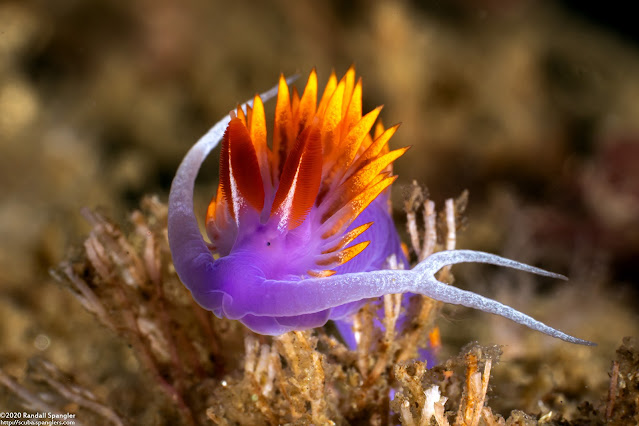Know how some animals use tools?
 |
| P/C Cyberminnie at Flickr |
In our last episode we saw this pom pom crab as it carries a sea anemone in each of its claws, using them as a defensive tool in the crab-eat-crab world on the coral reef. The anemones are essential external tools that are other living organisms.
But looking at the pom pom crab (and other animals that use other animals) makes me wonder about the nature of animals that incorporate (that is, literally in-corporate, take another organism into their body). There are certainly many parasitic organisms, including obligate parasites that can only live on a specific kind of host. But…
1. Can you find another invertebrate that incorporates PART of another animal into its body? That is, one animal doesn’t take the whole, but just select parts, and incorporates those parts into its own body?
I started with a simple search:
[ what animals incorporate other animals ]
That led me to reading about how some animals incorporate genes from other animals. Humans, for example, have incorporated over 100 genes from other animals during the course of their evolution. (Science journal “Humans may harbor more than 100 genes from other animals.”)
And THAT article reminded me about how human cells incorporated mitochondria (the organelles that are responsible for energy production in cells). They seem to have been independent bacteria that became incorporated into eukaryotic cells about 7 billion years ago.
When this happened, the previously independent pre-mitochondria bacteria became an endosymbiont — that is, any organism that lives within the body or cells of another organism.
Next query:
[ how did mitochondria evolve ]
led me to learn about the organism Elysia chlorotica which has green chloroplasts in its body as endosymbionts.
 |
| Elysia chlorata–the photosythesizing sea slug. (Head end on the right side.) |
Okay then, to learn about Elysia…
[ Elysia chlorotica ]
led me to the Wikipedia article, which told me that E. choloratica incorporates chloroplasts into its body from its food. That is, the chloroplasts (the green organelles that are responsible for photosynthesis) found inside of the sea slug aren’t made by the slug, but are incorporated into its body after eating its food source, the algae Vaucheria litorea, which actually makes chloroplasts.
2. Is there a specific term for this? (As you know, if you know the special term, that makes searching much, much simpler and more accurate.)
In reading during the search process, I came across two terms that are useful in this search. Endosymbiont (which we saw above), and another term, kleptoplasty, which is when one organism steals part of another animal!
Searching for:
[ kleptoplasty ]
Which leads to the Wikipedia article about kleptoplasty. Not a surprise. But when I poked around a bit in the article, I found another sea slug, Pteraeolidia ianthina, incorporates chloroplasts, but additionally incorporates nematocysts from other food sources. Oddly, it’s barely a footnote in the article, but if you search for:
[ nematocysts sea slugs ]
it leads to a number of articles (e.g., Smithsonian) that teach us that some sea slugs (such as aeolid sea slugs) not only consume the nematocysts, but then incorporate them into their bodies. Surprisingly, when aeolids feed food sources with nematocysts (such as hydroids), the first thing they do is prevent the stinging cells from firing by using the mucus lining of their gut. These nematocysts originate in the cnidarians (such as sea anemones, hydroids, jellyfish, corals, siphonophores, etc.) that are the food source for aeolid nudibranchs. Once eaten, the unfired nematocysts pass through the slug’s digestive tract, but some are excreted with the rest of the nudibranch’s waste, but immature stinging nematocysts are stored in pouches called cnidosacs until they have matured and are needed.
These slugs (also called nudibranchs) will then fire the stolen stinging cells when threatened, with the nematocysts stinging anything that tries to eat the nudibranch. The nematocysts are stored in protruding cerata (those spine-looking things) on their backs. And at the tip of each branch of the cerata, the nematocysts are stored in a small sac, the cnidosac.
Here are a couple of spectacular photos of aeolid nudibranchs taken by friend Randall Spangler.
 |
| The cerata on the back of this Aeolidia papillosa end with cnidosacs. Like Elysia, they incorporate dinoflagellates that provides some photosynthesis capability. P/C Randall Spangler. |
Searching for kleptoplasty in Google Books teaches us to distinguish between kleptocnidae (cnidae taken from cnidarian prey and used for the consumer’s defense) and kleptoplasty (chloroplasts or whole photosynthetic cells that continue photosynthesizing after ingestion by herbivores, mostly sacoglassans, the photosynthetic nudibranchs).
Search Lessons
1. Learn as you go. The striking thing about this Challenge was that it took a bit of reading to get to the technical terms (e.g., endosymbiont, and kleptoplasty) and the concepts behind them.
I started with a generic search: [ what animals incorporate other animals ] which led to learning about gene acquisition, and that led to searches for how mitochondria came to be incorporated, leading to the query [ how did mitochondria evolve ] which led to our discovery of how chloroplasts and nematocysts came to be part of nudibranch bodies.
This is a great example of learning as you search, picking up terms and concepts that you don’t about ahead of time, but acquire as you work through the searches.
In a sense, as you search, you’re performing your own kleptoplasty of ideas, incorporating what you’ve learned into your personal knowledge base.
I have to admit, these are the kinds of SearchResearch Challenges I like the best–they require some real learning and discovery along the way. Hope you enjoy them as well!
Search on!





